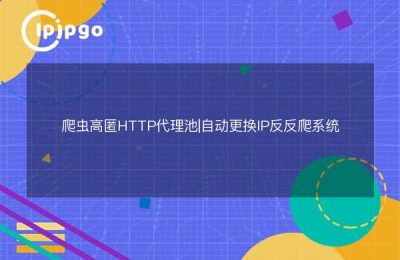
In the field of network data analysis, Java crawlers are like a hardworking bee, tirelessly collecting data from network flowers. However, as network security measures are tightened, crawlers are facing more and more challenges. In order for your Java crawler to work unhindered, using proxy IPs has become a proven strategy. In this article, we will explore in detail how to utilize proxy IP to enhance the efficiency and flexibility of your Java crawler.
What is a proxy IP?
Proxy IP, as the name suggests, is an IP that replaces your original IP address for network requests. it's like when you are shopping online and you get a friend to help you go to the queue to buy something instead of going there yourself. In this way, you can hide your real IP and avoid being blocked or restricted by websites.
Why do Java crawlers need proxy IPs?
In most cases, websites monitor and limit frequent requests. If an IP address sends a large number of requests in a short period of time, the website may consider this as malicious behavior and block the IP. this is like a person in a shopping mall who keeps going in and out of the same store, the clerk may wonder if he's snooping around. Using a proxy IP, you can switch between different IPs to avoid being recognized and blocked by websites.
How to use proxy IP in Java crawler?
Using proxy IPs in Java is not complicated. You can do it by setting up a `Proxy` object. Here is a simple code example:
import java.net.
public class ProxyExample {
public static void main(String[] args) {
try {
// Create a proxy object
Proxy proxy = new Proxy(Proxy.Type.HTTP, new InetSocketAddress("Proxy IP Address", port number));
// Open a connection and set up the proxy
URL url = new URL("http://example.com");
HttpURLConnection connection = (HttpURLConnection) url.openConnection(proxy);
// Read the response
BufferedReader in = new BufferedReader(new InputStreamReader(connection.getInputStream()));; // Read the response.
String inputLine; while ((inputLine = inputLine))
while ((inputLine = in.readLine()) ! = null) {
System.out.println(inputLine);
}
in.close(); }
} catch (Exception e) {
e.printStackTrace(); } catch (Exception e) { e.printStackTrace(); } in.
}
}
}In this example, we create a `Proxy` object and pass it into `HttpURLConnection` when we open a connection. This way, all network requests will be made through the specified proxy IP.
Choose the right proxy IP
Choosing the right proxy IP is crucial. There are many free and paid proxy IP services on the market. While free proxy IPs are low cost, they are often not as stable or secure as paid services. It's like when you're renting out an apartment, the free one may be a run-down shack while the paid one is a cozy apartment. You need to consider the speed, stability and security of the proxy IP when choosing one.
Notes on the use of proxy IPs
When using a proxy IP, you need to pay attention to the following points:
- Legal Compliance:Ensure that your use of proxy IPs complies with relevant laws and regulations.
- Frequency control:Even if a proxy IP is used, it is important to control the frequency of requests to avoid being recognized by the target website.
- IP Rotation:Change proxy IPs regularly to increase the stealth of the crawler.
summarize
By using proxy IP wisely, your Java crawler can collect data more freely in the vast Internet. Proxy IPs not only help you bypass website restrictions, but also protect your privacy and improve the efficiency of data collection. However, when using proxy IPs, you should also pay attention to the legality and ethical standards to ensure that your crawling behavior does not cause nuisance to others. I hope this article can provide you with valuable references to make your crawling journey smoother.








